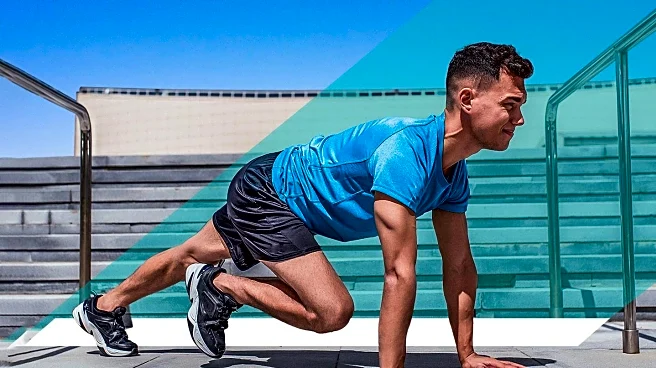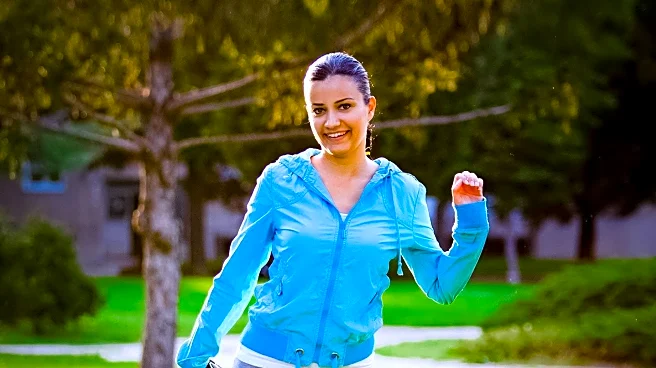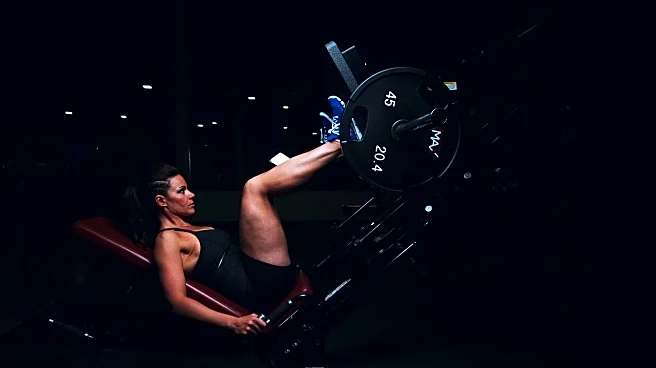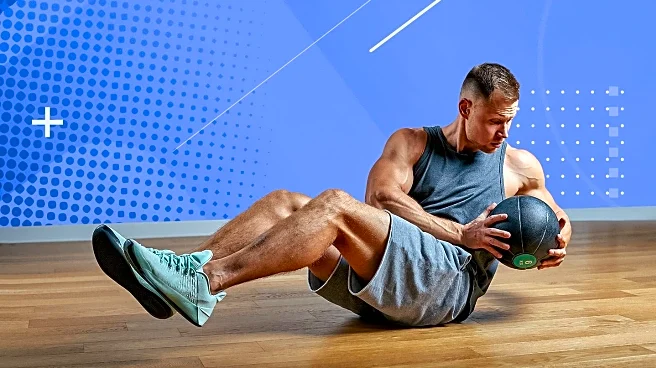What's Happening?
Matt Dustin, a NASM corrective exercise specialist, has emphasized the importance of bodyweight exercises in preventing muscle loss for individuals over the age of 45. As people age, they naturally experience hormonal changes, slower recovery times, and decreased physical activity, which can accelerate sarcopenia, the loss of lean muscle mass. Dustin advocates for bodyweight training as it requires full-body coordination, stability, and balance, making it more functional compared to weight machines that often isolate muscles. He highlights four key exercises: squats, pushups, step-ups, and plank shoulder taps, which focus on strengthening the core, glutes, legs, shoulders, and back. These exercises are designed to maintain muscle mass, protect bone density, and preserve balance and mobility, which are crucial for an active and independent lifestyle.
Why It's Important?
The significance of Dustin's recommendations lies in the broader impact on health and independence for older adults. As muscle mass declines, so does metabolism, bone density, and overall mobility, increasing the risk of falls and injuries. By engaging in bodyweight exercises, individuals can counteract these effects, maintaining their strength and independence longer. This approach not only supports physical health but also contributes to mental well-being by promoting an active lifestyle. The focus on functional movements ensures that the strength gained translates into real-life activities, enhancing the quality of life for those over 45.
What's Next?
Individuals interested in implementing these exercises can start incorporating them into their daily routines, focusing on proper form and gradually increasing intensity. Fitness professionals may also consider offering classes or workshops tailored to older adults, emphasizing bodyweight training. As awareness grows, there could be an increase in community programs and resources dedicated to promoting physical activity among seniors, potentially influencing public health policies to support active aging.
Beyond the Headlines
The emphasis on bodyweight exercises also highlights a shift towards more accessible fitness solutions that do not require expensive equipment or gym memberships. This democratization of fitness can lead to broader participation across different socioeconomic groups, reducing barriers to maintaining health and wellness. Additionally, the focus on functional strength training aligns with a growing trend in the fitness industry that prioritizes holistic health over aesthetic goals.










